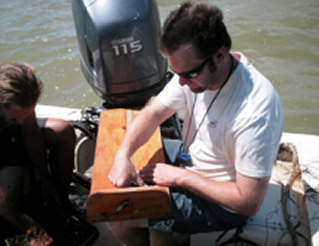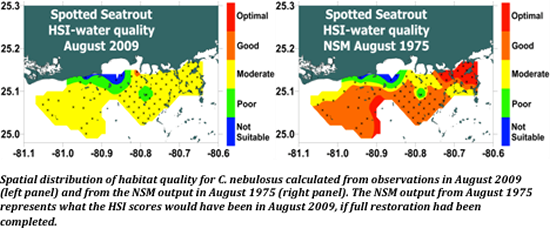Juvenile Sportfish Research in Florida Bay
The saltwater recreational fishery adjacent to the Everglades generates approximately
$880 million and greater then 6,000 jobs per year. This area includes Florida Bay, which
not only supports a substantial recreational fishing industry within its waters, but also
serves as a nursery ground for many of the adjacent commercial and recreational reef fishery
species. These commercial and recreational fishery species within Florida Bay will be affected
by Everglades restoration as it aims to restore Florida Bay to a less disturbed state by
minimizing hypersalinity. One of the best indicators for estuarine health is spotted seatrout
(Cynscion nebulosus). Cynscion nebulosus is a good indicator, because it spends its entire life
within the bay it was spawned and is sensitive to fluctuations in water quality including
salinity. Additionally, Cynscion nebulosus is the second most commonly caught sportfish in Florida
Bay, accounting for approximately 30% of all catch.

We have partnered with NOAA's Southeast Fisheries Science Center (NOAA/SEFSC) to investigate
how juvenile sportfish in Florida Bay respond to water quality and habitat. This project conducts
otter trawls to sample the juvenile sportfish populations, along with water quality and seagrass
measurements in Florida Bay. The objectives are to 1) develop reference conditions that can be
used as a baseline to evaluate trends in juvenile spotted seatrout populations) and quantify the
impacts of Everglades Restoration; (2) develop a juvenile abundance index (mean abundance and
frequency of occurrence) and determine if annual differences in abundance occur among areas in
the Bay; (3) examine the relationship between juvenile spotted seatrout abundance, salinity,
temperature, and seagrass; use this analysis to gain insights into the potential response of
spotted seatrout to CERP; and (4) determine the salinity preference for other juvenile sportfish
in Florida Bay.

|
Contact Information for OCED/EAM Juvenile Sportfish Research in Florida Bay Researchers:

